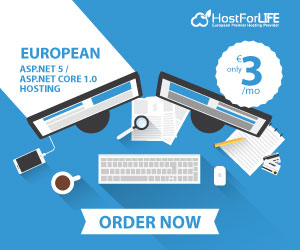
October 3, 2025 08:48 by
 Peter
Peter1. What is package.json?
package.json is the heart of any Node.js project. It declares your project’s dependencies and provides metadata about your application.

Key Features
- Lists dependencies and devDependencies.
- Specifies version ranges using semantic versioning ( ^ , ~ ).
- Includes project metadata like name, version, scripts, author, and license.
- Human-readable and editable.
{
"name": "my-app",
"version": "1.0.0",
"dependencies": {
"lodash": "^4.17.21"
},
"devDependencies": {
"jest": "~29.0.0"
},
"scripts": {
"start": "node index.js"
}
}
Key Point: package.json specifies what versions your project is compatible with , not the exact installed version.
2. What is package-lock.json?
package-lock.json is automatically generated by npm to lock the exact versions of every installed package, including nested dependencies.
Key Features
- Records the exact version installed for each package.
- Contains resolved URLs and integrity hashes to ensure packages are not tampered with.
- Records nested dependencies (dependencies of dependencies).
- Not intended for manual editing.
{
"name": "my-app",
"lockfileVersion": 3,
"dependencies": {
"lodash": {
"version": "4.17.21",
"resolved": "https://registry.npmjs.org/lodash/-/lodash-4.17.21.tgz",
"integrity": "sha512-xyz"
}
}
}
Key Point: package-lock.json ensures that every environment installs exactly the same versions , even if package.json allows ranges.
3. Main Differences Between package.json and package-lock.json
| Feature | package.json | package-lock.json |
| Purpose |
Declares dependencies and project info |
Locks exact versions of installed packages |
| Edited by |
Developer |
npm automatically |
| Version |
Can specify ranges (^, ~) |
Exact versions installed |
| Nested dependencies |
Not recorded |
Fully recorded |
| Effect on installation |
npm uses ranges to resolve versions |
Ensures consistent installs |
| Human-readable? |
Yes |
Not really |
4. How npm install Works
The npm install command is used to install packages based on package.json and package-lock.json.
# Install all dependencies listed in package.json
npm install
# Install a specific package and save it to dependencies
npm install lodash
# Install a package as a dev dependency
npm install --save-dev jest
# Install a package globally
npm install -g typescript
Process
- Reads package.json for dependencies.
- Resolves the latest versions allowed by version ranges (if package-lock.json doesn’t exist).
- Downloads packages to node_modules.
- Updates or creates package-lock.json with exact versions.
5. What Happens If You Delete package-lock.json?
If package-lock.json is deleted and you run:
npm install
- npm will resolve latest versions matching the ranges in package.json.
- Download new packages and regenerate package-lock.json.
- This may result in different versions from the previous install, which could break your code.
Safe scenarios for deleting:
- Intentionally updating packages.
- Starting a fresh project or refreshing dependencies.
Why are both files important
- package.json defines what your project needs.
- package-lock.json ensures everyone gets the exact same package versions for consistent development and production environments.
Conclusion
package.json = “What I want” (dependency ranges and project info)
package-lock.json = “Exactly what I got” (locked versions)
Deleting package-lock.json can lead to installing newer package versions, which may cause unexpected issues. Always commit package-lock.json to version control for consistency.